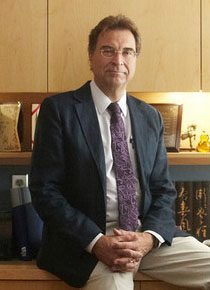September 16, 2013 — Harvard School of Public Health’s Education and Research Center (ERC) for Occupational Safety and Health has been awarded a five-year, $1.8 million per year grant from the Centers for Disease Control and Prevention’s National Institute for Occupational Safety and Health (NIOSH). The renewal of this sustaining grant represents the center’s continued success in competing for funding since its inception in 1977, and will enable the continuation of important work both in training occupational safety and health professionals and in conducting research on a wide variety of occupational health problems.

“The NIOSH grant’s degree-granting training aspect, which accounts for more than 60% of the ERC budget, is extremely important in helping us train professionals who can work both on the research side and also do real-world hazard assessment and intervention,” said Center director [[David Christiani]], Elkan Blout Professor of Environmental Genetics. Such training is critical, he added, because, “given the size of the American workforce—roughly 155 million—the number of professionals trained to deal with workforce health comes up pretty short.”
The center is heavily focused on training practitioners and researchers in workplace disease and injury prevention, Christiani said. He added that the Center also conducts research on new workplace hazards and new technologies that could impact health, such as nanotechnology, and issues related to worker health and disease susceptibility, such as sleep disorders, obesity, and genetic factors.
ERC researchers have both a regional and a national focus, Christiani said. Among New England workers, they have investigated workplace health in the construction, health care, manufacturing, and fishing industries. Nationwide they have studied occupational hazards facing firefighters, welders, construction workers, truckers, bicycle messengers, and workers in office buildings, hospitals, labs, and greenhouses, to name a few.
Christiani noted a few of the health hazards workers face. Welders are exposed to dangerous fumes and textile workers to airborne bacteria. Nurses suffer back pain. Professionals like radiologists have repetitive motion disorders from computer use. Another challenge is addressing the workplace health needs of a large foreign-born segment of the workforce, who often face the most hazardous conditions at work, in addition to lacking access to adequate health-promoting activities outside of the workplace, Christiani said.
“We look not just at what the workplace does in terms of exposures and how to mitigate that, but also how to reduce the consequences of what people bring to the workplace in terms of their own genetics and their lifestyles,” Christiani said. For instance, ERC investigators have examined how sleep disorders and obesity can affect truck drivers and first responders.
One of Christiani’s own long-term occupational research pursuits has focused on how cotton dust affects the health of textile workers. Although he has studied garment workers in Shanghai, his findings have ramifications for many different types of U.S. workers as well. “Workers can be exposed to harmful dust if they work in zoos, in plywood production, in wastewater treatment plants, or if they live or work in water-damaged areas, buildings, or homes, for example,” said Christiani.
Given the current budget climate, Christiani said, “It’s a big deal to get our grant renewed.” It’s tax dollars well spent, he thinks. “Our center is aimed at prevention—at saving hearts and limbs and eyes and lungs—and this saves money in the long run,” he said. “It helps us preserve the health of the U.S. workforce.”
Photo of David Christiani: Kent Dayton
Learn more
The Triangle Factory fire and workplace safety regulations (HSPH podcast)
Reducing head and neck pain from tablet computer use (HSPH feature)
